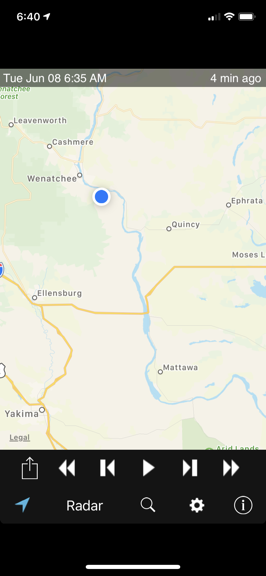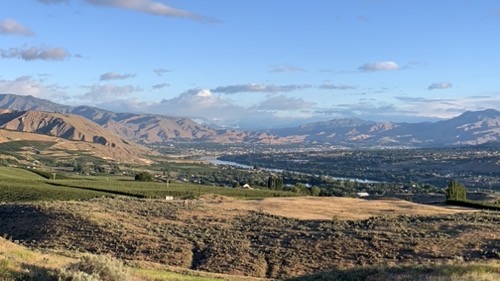I explore the logic behind performance charts and what the FAA told me about flying in hot weather.
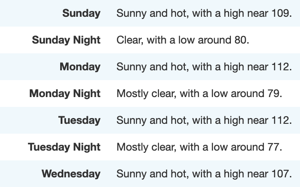
Next week’s weather. It’s going to be hot.
I have a Part 135 check ride coming up on Tuesday. Per the National Weather Service — my primary source of weather information — the forecast high in Wenatchee for that day is 112°F.
If you live in any country other than the metric-unfriendly US, that’s 44.4°C.
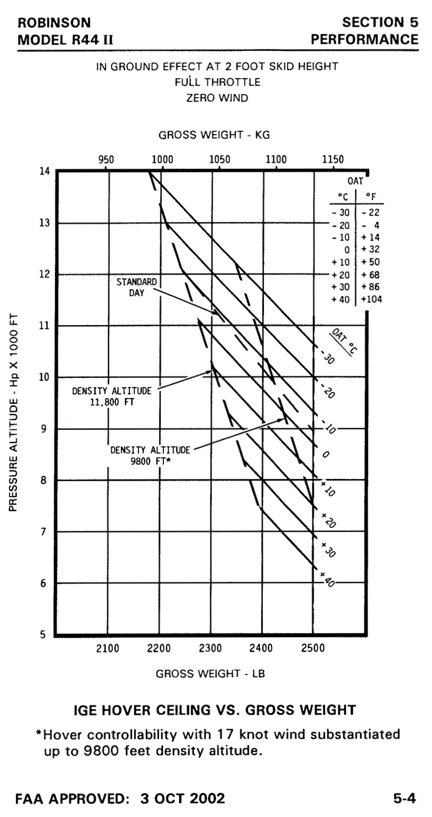
The IGE Hover Chart for an R44 Raven II does not chart any performance data for temperatures above 40°C.
The In Ground Effect (IGE) Hover charts for a Robinson R44 Raven II, which is what I fly, end at 40°C. That is, they do not provide any performance data for 44.4°C.
Now I learned to fly in Arizona and on a typical summer afternoon, 112°F was not uncommon. We flew in all kinds of heat. Hell, I remember landing at Bullhead City one day and reading 123°F on my outside air temperature (OAT) gauge. (And that was in a helicopter without air conditioning.) If the flight school I attended — which is still in business — didn’t fly when it was above 104°F (40°C), they wouldn’t be able to fly half the day about a third of the year. No one questioned whether it was safe or legal. We just did it.
Time went by. Someone suggested to me that flying when the temperature was above 40°C was not only unsafe but illegal. “You’re a test pilot when you do that,” more than a few people have told me. “Your insurance wouldn’t cover you in a crash,” another said, “because you’re operating outside of published data.”
Here's a pilot question. If the performance charts for your aircraft only go up to 40°C (104°F), is it safe/legal to fly when it's 112°F outside? #PilotsOfTwitter #BoysWhoFly #GirlsWhoFly #Flying
— ᗰᗩᖇIᗩ ᒪᗩᑎGEᖇ 🌧🚁🌬🍒 (@mlanger) June 23, 2021
Curious to see what other pilots thought about this, I put a poll on Twitter and gave the Pilots of Twitter 24 hours to respond. I also asked for comments. A lively discussion got going in the comments. It was also pointed out that I could have added “Unsafe but legal” as one of the options with the shared opinion that “the FAA gives you enough rope to hang yourself with.”
I do recall airplanes being grounded at Phoenix Sky Harbor airport one day when temperatures were “too hot” for some of the airliners, although it wasn’t clear from articles I read about how the limit was established.
Well, in an effort to head off a “gotcha” by my FAA examiner, I emailed him this morning to warn him of the heat:
A quick heads up.
We’re expecting high temperatures of 112°F on Tuesday. If you are of the school of thought that says we can’t fly when temperatures exceed 104°F because that’s the highest temperature on performance charts, we should probably plan to fly very early, before the temperature tops out. …
If you’re not of that school of thought — I learned to fly in Arizona so I’m not — we should be fine. The helicopter does have air conditioning, although I’ve never tested it in 112°F weather.
Please let me know what time you plan to arrive.
He replied, in part:
I am unaware of a temperature limitation that restricts operations of the R-44. We can complete the ground during the afternoon of the 28th so we can fly on the morning of the 29th to minimize the effects of the heat. …
So that’s telling me that it’s legal. (But he’s not taking any chances or doesn’t want to test my air conditioning.)
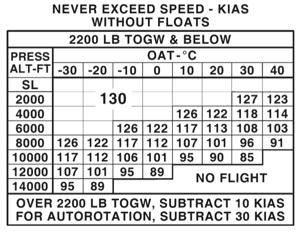
Here’s a limitations chart: Never Exceed Speed. If I extrapolated, I think operations at lower elevations would be fine, but I certainly wouldn’t exceed about 85 knots 44°C at 8000 feet. (Heck, the helicopter would be vibrating like crazy at that speed and elevation anyway.)
Is it safe? Well, as this “test pilot” could tell you, if you extrapolate the data in the charts, keeping in mind the aircraft’s gross weight and the altitude you would be operating at, it can be. Keep the aircraft light, don’t plan any high altitude landings, and keep your speed down.
Chances are, the helicopter will continue to operate in heat that you won’t want to be flying in anyway.

